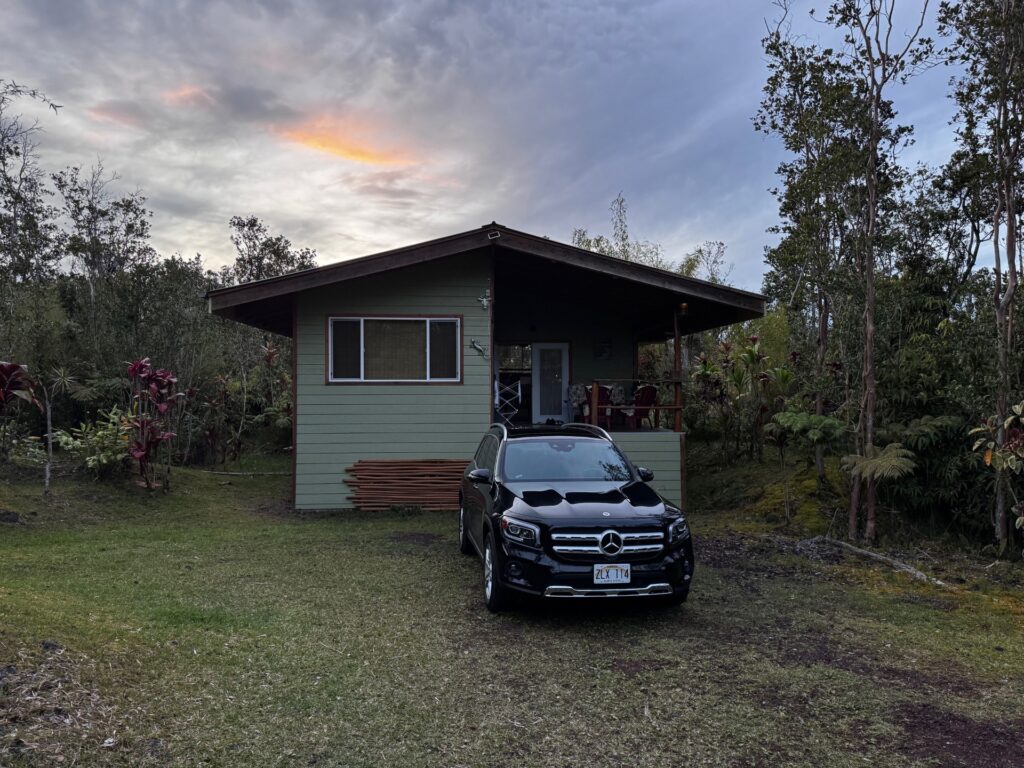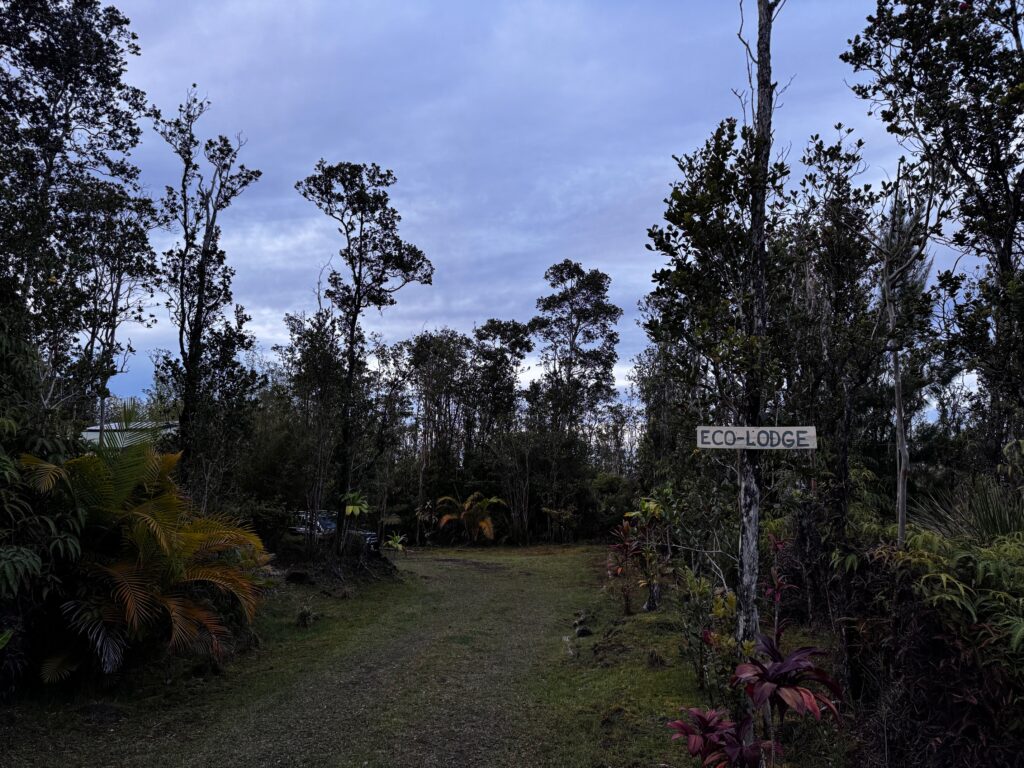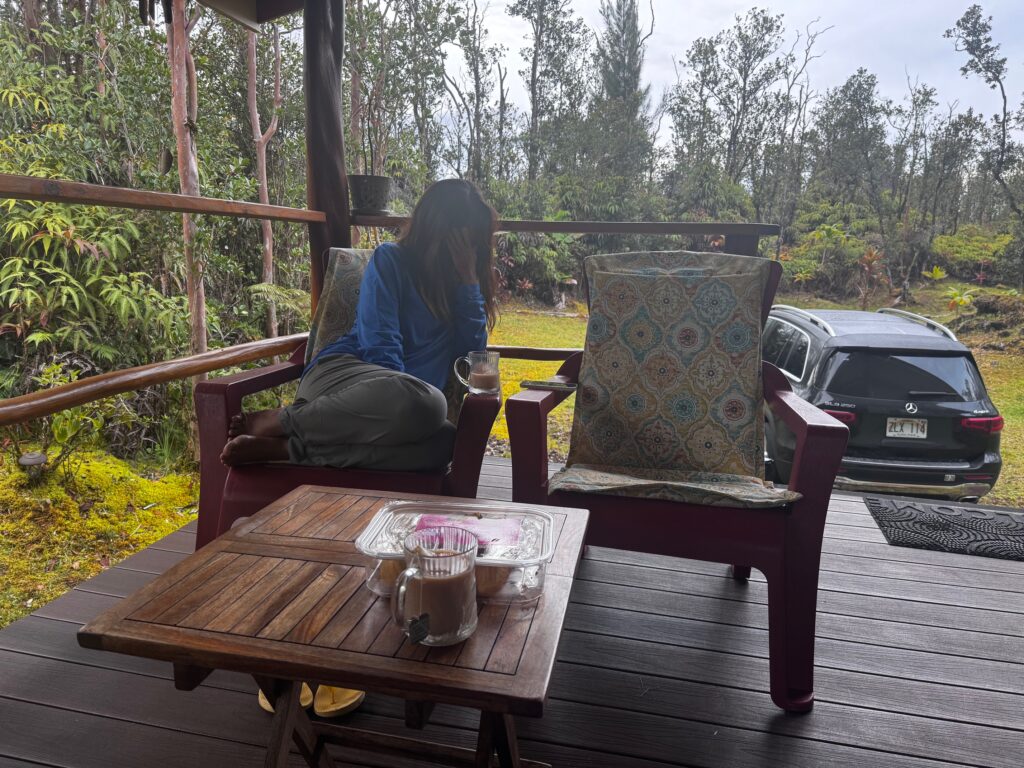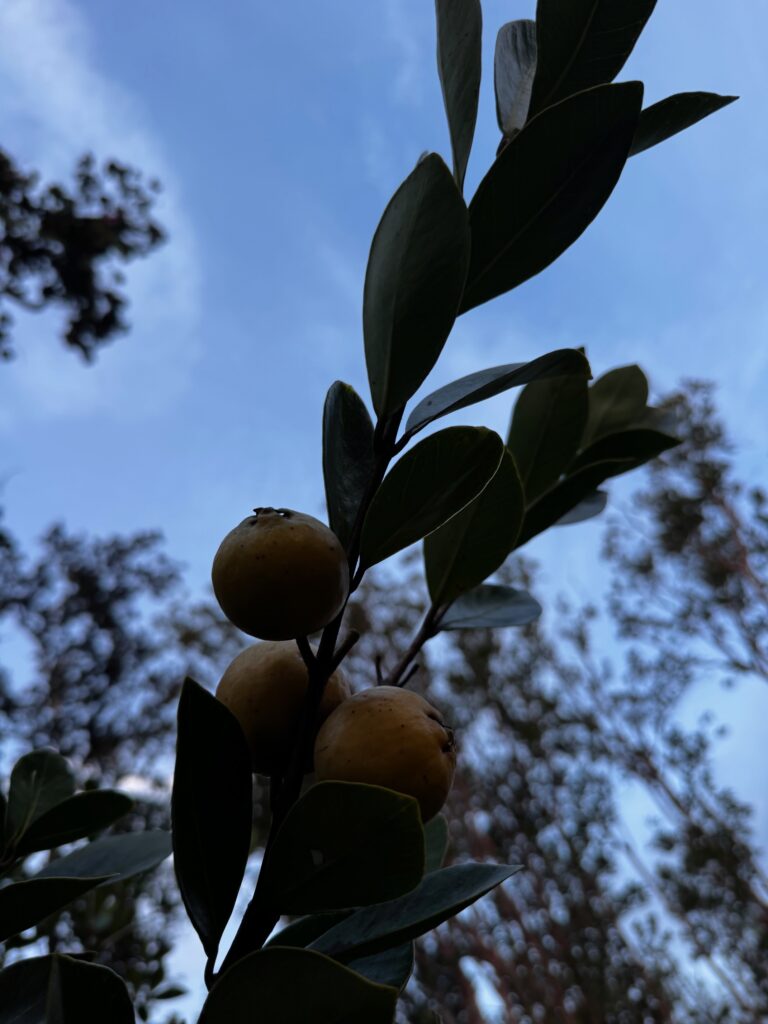Reflections on Mindfulness, Buddhist Wisdom, and Life’s Purpose
We took a vacation with my wife to the Big Island of Hawaii a few days ago. She found an eco-friendly cabin in the middle of a tropical forest on Booking.com. She checked out their website and discovered that the owners are a Hungarian couple, Ági and András. This made us curious. We wondered how a Hungarian family ended up living in the lush rainforest beneath Kīlauea, one of the most active volcanoes in the world. So, we decided to book their cabin for three nights.

The location was perfect for us. We planned to explore the Hilo side of the island and visit places like Akaka Falls, the Hilo Farmers Market, Rainbow Falls, Black Sand Beach, and South Point—the southernmost tip of the United States. The only gravel road was the one that took us from the main highway to the cabin, just a few miles long, winding through the dense forest. We liked that it was so remote—far from busy tourist spots—yet still not too far from the places we wanted to visit. The roads to the other sites we visited later were paved and winding through lush greenery. Finally, we arrived at the cabin, which was eco-friendly, powered by solar energy, and built to be self-sufficient. It was spacious and cozy.

The cabin had some special features too. The water was supplied from a tank that collected rainwater, which was then filtered to make it drinkable. It was amazing to think that all the water we used came from the rain, making the cabin even more environmentally friendly.

As soon as we unpacked, I took out my drone to see the area from above. From the sky, I saw endless tropical rainforest stretching around us, with the tall, smoky silhouette of Kīlauea volcano in the distance. I noticed some scattered houses too, nestled among the trees. Later, András told me that hardly anyone lives here permanently. Not even the postman goes to this remote place; he only drives twice a week to check his P.O. Box in the nearby town.
While walking around the cabin, I picked some ripe Lilikoi fruit—bright orange passion fruit—from the trees. Its sweet, tangy flavor reminded me of a mix between a pineapple and a citrus, with a juicy, refreshing bite. I also tasted some ʻōhelo berries, which are small, orange to red fruits of a native Hawaiian shrub commonly found in the Kīlauea rainforest. They have a tart, slightly sweet flavor, a mix between a cranberry and a pomegranate, with a juicy, invigorating taste.

The place made me dream about owning some land in Hawaii. I imagined turning it into a peaceful retreat—a place dedicated to mindfulness, meditation, and reconnecting with nature. I pictured building simple, cozy cabins for guests, where they could relax, meditate, and find a quiet space away from the busy world. It would be a sanctuary of calm, surrounded by trees, sounds of the forest, and the beauty of the natural landscape.

We chose the Big Island partly because we are thinking about buying a country house and moving away from the crowded streets of Waikiki. Living in Waikiki is exciting, with its beaches, shops, and lively streets, but it can also be noisy and hectic. We love activities like bodyboarding, swimming, and strolling through the busy tourist areas. Still, we also dream about gardening, creating a beautiful botanical garden, and watching the stars in a place free from city light pollution. We wanted to see how we felt about living in such a peaceful, natural setting before making any big decisions.
The self-check-in process was very easy. All the instructions were sent to us by email, which made arriving smooth and stress-free. I couldn’t wait to meet András the next day and hear his story about how he ended up living here. When we finally met, he was extremely friendly. He brought us some freshly harvested apple bananas from his garden, and we started a pleasant conversation.
I jokingly told him that I really enjoyed the chirping of the forest at night; I didn’t even need to play meditation sounds from my phone to relax. Hearing the sounds of the forest felt like a natural meditation. When I mentioned meditation, András opened up and began talking about deeper issues—about Buddhism, mindfulness, and the nature of inner peace. It turned out he was very knowledgeable about these topics. He even has a podcast called Sangha, where he shares his thoughts on Oneness, meditation, Buddhist wisdom, and many other subjects I also enjoy exploring. You can listen to his podcast here.
Sangha is a word with roots in ancient Sanskrit and Pali, often used in Buddhist traditions. It means a community or gathering of like-minded people who come together to practice and share spiritual insights. In a broader sense, it symbolizes a space or environment where individuals seek harmony, understanding, and inner peace—much like a retreat or sanctuary dedicated to mindful living and spiritual growth.
András shared with me that he moved to America from Hungary with his parents when he was 19. He learned English here, went to college, and eventually pursued a career in Hollywood. He talked about how success in Hollywood often means working on projects driven by demand rather than personal passion. Despite the fame and achievements, he decided to buy six acres of land in Hawaii and create a retreat with his wife and two children—a peaceful place where they could reconnect with nature and find true happiness.
He also shared that he has to stay home sometimes when his wife drives their kids to school because they have a 17-year-old dog who isn’t doing well. They don’t want to leave him alone at home, worried about his safety. His kindness and concern for his family’s little companion truly touched me, revealing the gentle soul behind his story.
This meeting didn’t feel like an accident to me. I believe that everything happens for a reason—that what we focus on in life manifests in our experience. Meeting András and learning about his journey opened my eyes to new perspectives. His insights made me reflect deeply on how modern mindfulness practices are rooted in, and also different from, Buddhist teachings. Both emphasize the importance of being present, accepting oneself, and cultivating compassion, but Buddhism offers a comprehensive philosophy that explores the nature of suffering, interconnectedness, and liberation through meditation, ethical living, and wisdom.
Since meeting András, I’ve been thinking a lot about these ideas—how they relate to each other and how they can be applied in everyday life. They inspired me to write this article on my website, as I believe that embracing these teachings can help us all find balance and peace. Whether through mindfulness, positive thinking, or spiritual practice, the goal is to understand ourselves better and cultivate a sense of harmony that radiates outward.
Sitting there in the peaceful Hawaiian forest, I felt a renewed sense of purpose—to continue exploring these teachings and sharing my insights. I believe that by opening our hearts and minds to the deeper truths of life, we can find the inner calm and oneness we all seek.